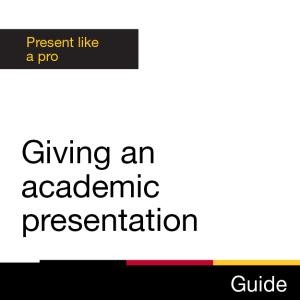Time commitment
2 - 5 minutes
Description
This video will outline a series of dos and don'ts you should follow when designing your academic poster.
Video
Transcript
[Please note – enhanced descriptions of visual content from the video have been added to this transcript within parentheses where useful]
Follow these dos and don’ts to design an academic poster that will dazzle, not disappoint!
A poster like this [The example poster contains plain text, a bright blue background, and the text on the poster is not aligned] would not do your hard work justice. Let’s transform this poster to showcase your work and capture the audience’s attention.
- Let’s start with the colour scheme. Don’t use neon colours that make your poster too hard to read! Do maximize the contrast between text and background - black and white have the highest contrast but other combinations work, too! [Example Poster now has white background and black text]
- Don’t scatter information across your poster. If there’s no flow, the audience won’t know what to read first!
- Do organize the content into clearly labelled sections [Example poster now has sections of text labeled Layout, Technical, and Visuals]. In some disciplines, these sections may be background, methods, results, and conclusions. Don’t forget sections for references and acknowledgements if you have received funding for your research. [Example Poster now has a section for acknowledgements]
- Don’t let poor alignment be distracting!
- Do use tools such as zoom and guides to align your content for a professional look.
- Don’t have too much text on your poster! On average, people will spend 2-3 minutes at your poster, and won’t be able to read it all.
- Do reduce the amount of text by using bullet points, not paragraphs. [Example Poster text is now bulleted] Focus on key messages for each section and use at least a 32-point font to make sure it can be read from 1-2 metres away. Sans serif fonts like Arial are easiest to read on posters [Example font is now Arial]. Tables, charts, and pictures can do a better job displaying your research than endless text. [Example Poster now contains a table, chart, and University of Guelph logo]
- Don’t use low-resolution images that look pixelated when they’re printed. Aim for a resolution of at least 300 pixels per inch.
- Do make sure you have the proper permissions to use the images on your poster. To search for pictures you can use, start on the Library’s Find Images Guide. On Screen text: https://guides.lib.uoguelph.ca/images
Now, this poster will do a better job capturing your audience’s attention and presenting your research findings.
Need more help? Ask us! Get help via chat or email via the Library website, phone us at 519-824-4120 ext 53617 or visit the AskUs Desk
License

This work is licensed under a Creative Commons Attribution-NonCommercial-ShareAlike 4.0 International License.
Recommended
- Ask Chat is a collaborative service
- Ask Us Online Chat hours
- Contact Us

